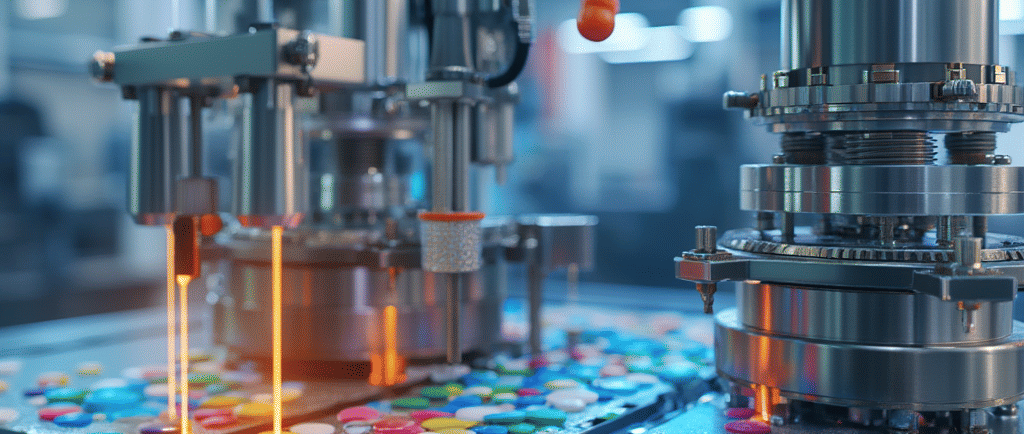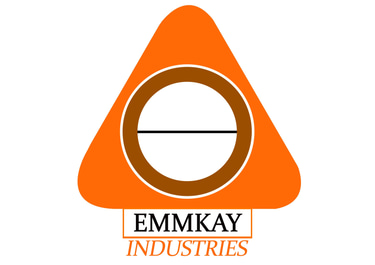Innovations and Applications in Modern Tablet Manufacturing


Modern tablet manufacturing is undergoing a rapid transformation, driven by cutting-edge innovations in tooling design and production processes.
At EMMKAY Industries, we are at the forefront of these developments, ensuring our clients benefit from the best practices and advancements available. This blog delves into the diverse applications and future trends in tablet manufacturing, highlighting industry breakthroughs that enhance quality, efficiency, and adaptability.
1: The Role of Tablet Tooling in Different Tablet Types
Tablet tooling is the linchpin in producing various tablet types, each with unique requirements. Whether manufacturing compressed tablets, coated tablets (including sugar-coated, film-coated, and enteric-coated), multiple compressed tablets, layered tablets, or controlled-release tablets, the design and precision of tooling dictate the final product's quality and performance.
Compressed Tablets: Standard tooling designs ensure uniform compression and density, critical for tablets requiring consistent dosage.
Coated Tablets: Specialized tooling supports additional operations like engraving or embossing, ensuring coatings adhere perfectly for enhanced aesthetics and functionality.
Multiple Compressed and Layered Tablets: Advanced tooling facilitates the precise alignment and compression of separate layers, ensuring distinct but integrated dosage forms.
Controlled-Release Tablets: Tailored tooling enables precise modulation of tablet hardness and matrix integrity, which is crucial for predictable drug release profiles.
Each tablet type demands specific features from its tooling set to address challenges and optimize manufacturing efficiency while maintaining high quality.
2: Exploring Segmented Turret Technology
Segmented turret technology represents a fascinating innovation in tablet tooling that streamlines the production process. By design, segmented turrets eliminate the need for individual dies and die lock screws during changeovers, significantly reducing downtime and operational errors.
Reduced Changeover Time: Segmented turrets integrate multiple tooling segments into a single unit, which minimizes the necessity to manually adjust or replace dies between production runs.
Minimization of Human Error: The integrated design reduces the risk of misalignment or improper assembly, ensuring that each tablet is formed with precision.
Enhanced Production Efficiency: With the reduction in manual interventions, manufacturers can achieve higher throughput and maintain consistent tablet quality.
This section spotlights how segmented turret technology enhances manufacturing flexibility and contributes to a faster, more reliable production cycle.
3: Tablet Tooling in Different Tablet Compression Machines
The application of tablet tooling spans a variety of compression machines from industry-leading manufacturers. Each machine offers distinct benefits and operational efficiencies when paired with the right tooling.
Cadmach, Manesty, and Killian Machines: These brands are celebrated for their precision and high-speed capabilities, making them ideal partners for advanced tooling systems that require tight tolerances.
Korsch, Sejong, and Ronchi Machines: Known for their innovative approaches and robust builds, these machines often incorporate state-of-the-art tooling interfaces that support a wide range of tablet types.
Tooling Adaptability: The versatility of modern tooling enables manufacturers to switch between machines seamlessly, ensuring that tooling designs are compatible and optimized for specific machine architectures.
This section details how integrating adaptable tablet tooling with diverse compression machines helps manufacturers maximize efficiency, enhance quality, and reduce production bottlenecks.
4: The Future of Tablet Tooling: Trends and Developments
Looking ahead, the evolution of tablet tooling is set to further revolutionize the pharmaceutical manufacturing landscape. Future trends are focusing on innovations that not only improve production efficiency and tablet quality but also drive down manufacturing costs.
Advancements in Materials: The use of novel material composites and heat treatment techniques will provide tooling with enhanced durability and reduced maintenance needs.
Innovative Design Enhancements: Future tooling designs may incorporate smart, sensor-integrated systems that enable real-time monitoring of wear and quality during tablet compression.
Digital Integration and AI: The integration of digital twins and machine learning models will optimize tooling performance by predicting wear patterns and automating maintenance schedules.
Cost-Reduction Strategies: Continuous improvements in manufacturing processes and tooling retooling methods will help reduce waste, improve energy efficiency, and ultimately lower production costs.
This forward-thinking perspective outlines how technological advances will shape the next generation of tablet tooling, driving industry standards towards greater efficiency and product excellence.
Summary
This blog about "Innovations and Applications in Modern Tablet Manufacturing" covers:
Tablet Tooling for Varied Tablet Types: Understanding how different products require tailored tooling solutions.
Segmented Turret Technology: Exploring how integrated tooling systems enhance production efficiency by reducing changeover times.
Tooling Across Compression Machines: Analyzing how advanced tooling adapts to various machines to maximize throughput and consistency.
Future Trends in Tablet Tooling: Highlighting innovations in materials, design, and digital integration that promise to reshape the future of tablet manufacturing.
For more in-depth insights and industry-leading practices, visit EMMKAY Industries and see how our cutting-edge solutions can drive your tablet manufacturing success.





